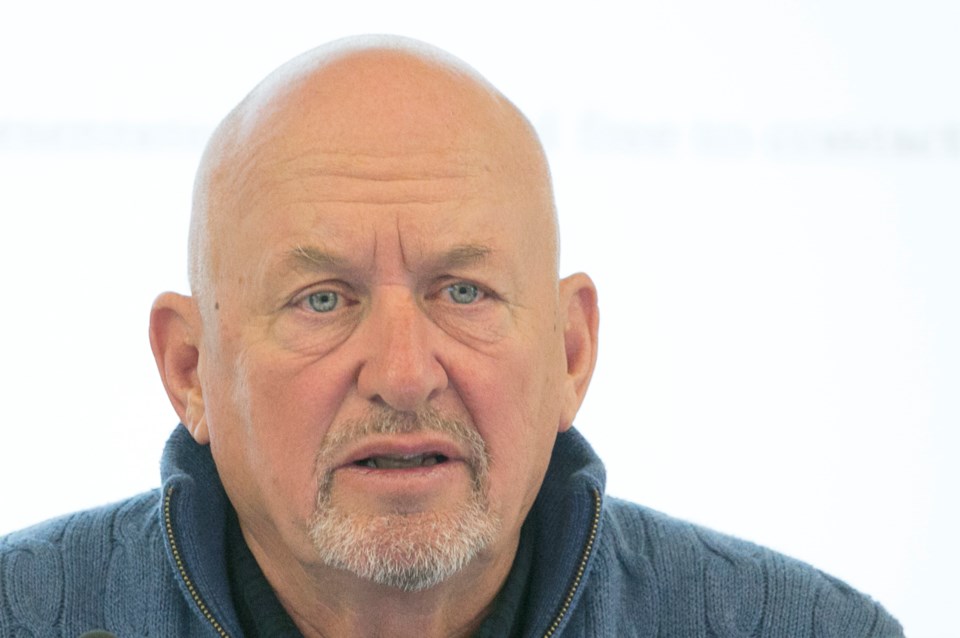MOUNTAIN VIEW COUNTY – The provincial government’s new police funding model will cost Mountain View County taxpayers about $366,000 in 2020, and about $550,000 in 2021, increasing to about $1.1 million in 2023, officials say.
“We are going to be faced, certainly in our budgeting process, with how do we deal with these things on an ongoing basis,” said Reeve Bruce Beattie. “As the province gets rid of their deficit, do we increase taxes? Do we reduce services? What is the response that we are going to have to make from a municipal perspective?
“I guess it's wait and see whether or not taking these dollars from the municipal tax base, which is based on residents’ taxes, is an appropriate way to fund policing. It’s the average homeowner and landowner who are going to be paying this increased cost.
“We are seeing a reduction in MSI (municipal sustainability initiative) and now an increase in policing, and all these things start adding up. If we are putting money in, it seems to me that we should have some input into how those resources are going to be allocated.”
Announced last week, the new model will add about 300 new officers, as well as support staff. It will see small municipalities, including Mountain View County, contribute 10 per cent of policing costs in 2020, followed by 15 per cent in 2021, 20 per cent in 2022 and 30 per cent in 2023.
Exact policing costs for each municipality will be determined by municipal tax base, as measured by equalized assessment, and population.
The county has done calculations on the funding model, determining that the cost to the county will be about $1.1 million by 2023, says CAO Jeff Holmes.
Finding the new officers needed under the plan could be problematic, said Beattie.
“It appears we are going to be required to contribute towards this rural policing,” he said. “I think there are major challenges to achieve those kinds of numbers because we have been understaffed at all of our detachments across the province over the last number of years.
“It hasn’t been a question of dollars; it’s been a question of can you find the recruits and if you can find recruits, how do you retain them? I guess the proof will be in the pudding whether we actually achieve that goal.”
Al Kemmere is the president of the Rural Municipalities of Alberta (RMA) and a Mountain View County councillor.
“Rural Municipalities of Alberta appreciates the government of Alberta’s willingness to consult on this issue, and as a result of input from RMA and rural municipalities, implement a phased-in police-costing model,” said Kemmere.
“Rural crime has been an ongoing issue in Alberta in recent years, and rural municipalities recognize they need to share in the costs of the solutions to support safer communities.”
Jason Nixon is the Rimbey-Rocky Mountain House-Sundre MLA and minister of environment and parks.
“Crime affects many in my own rural community, and it is an issue that is incredibly personal to me,” said Nixon. “All Albertans deserve to feel safe in their own homes and confident that they will not fall victim to violent or property crime.
“This new police funding model will provide increased security and certainty for rural Albertans, and value for taxpayer dollars.”
As part of the police funding model, the province is creating a new Alberta Police Advisory Board. Municipal leaders will be able to advise the board on local needs.
Under the plan, the number of uniformed patrol officers in rural detachments will increase to about 1,900.
The UCP government says the new policy will make Alberta communities safer; the official Opposition calls it a massive download on rural residents.
“Ensuring Albertans are safe, secure and protected in their communities goes to the heart of who we are as a government,” said Minister of Justice and Solicitor General Doug Schweitzer. “We want to ensure we fund law enforcement in an equitable and sustainable way that will ensure we have more police in our communities.”
Under the plan new civilian positions will assist with administrative tasks and investigative support to increase response times and help ensure officers have the support network they need to protect Albertans by spending more time on roads and in communities, he said.
NDP justice critic Kathleen Ganley says the Kenney government is forcing rural communities to pay more for additional police.
“This is a historic tax grab being downloaded onto the people of Alberta,” said Ganley. “The UCP government is downloading $200 million to the municipalities of this province, municipalities who are already looking at cuts.
“Alberta’s NDP caucus supports adding police. What we don’t support is massive hikes to property taxes for Albertans already struggling because the UCP hasn’t created jobs or spurred economic growth.”
Barry Morishita is the president of the Alberta Urban Municipalities Association, which represents towns in this region and elsewhere in Alberta.
“Further consultation is critical to supporting local governments with the policing resources they need, and we look forward to actively contributing to the Alberta Police Advisory board,” said Morishita.



